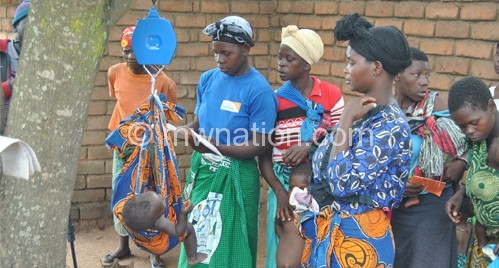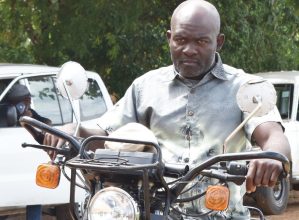Carrying baby on back at a price
In Malawi, the bliss of motherhood is demonstrated by, among other things, carrying a baby on the back. The Malawian child literally grows up on its mother’s back.
Mothers are seen with their babies strapped on their back when doing household chores, or when they want to calm a crying baby or just to simply put the baby to sleep.

But for Mercy Chakhala and other women in Bumphula Village, Traditional Authority Chilooko in Ntchisi, this is a privilege for those that have money. She has a nine-month-old baby boy whom she has never carried on her back.
In Ntchisi, the chamzinda cultural practice prohibits women from carrying their babies on their backs until they pay a fee to their Group Village Head (GVH) as a way of introducing a newborn to him.
Mercy’s baby has grown up being carried in her mother’s hands only. Surprisingly, the baby can be strapped on the back of his grandparents, siblings or any other person, but not his mother.
It is a grave offence for Mercy to put her baby on her back—she could lose the boy and also pay a huge amount of money if discovered by the chief’s informants.
“My daughter gave birth last year in September but has not started carrying her son on her back yet because we have not paid chamzinda to the chief,” confirmed Chakhala Mtima, Mercy’s father.
He adds that the practice takes several stages.
“We are supposed to inform the chief when our daughters have started menstruating, when they are getting married, when they get pregnant and when they have delivered. All these stages go with money and summed up, it may cost over K15 000 [US$36],” says Chakhala Mtima.
Mackford Petulo, another parent who had a bad experience with the cultural practice, said the practice has been there since time immemorial.
Petulo’s daughter gave birth to a baby girl. And after honouring the first two stages of menses and marriage by paying K2 000 and K3 000 respectively, he had no money to pay the chief when the baby was born. Observing that it was not practical to keep the baby in the hands all the time, he told his daughter to secretly start putting her baby on her back.
“Immediately she started putting her baby on her back, her breasts developed sores and later into serious wounds that she could not breastfeed the baby. We knew this was a result of disobeying the chief. We struggled to source the money and paid, afterwich she got healed,” said Petulo.
In chamzinda, when the money is paid, the chief sends a representative, usually, an old woman, who goes to put the baby on her mother’s back as a ritual of acceptance. The defaulters’ breasts get healed after the ritual.
Traditional Authority Chilooko, in whose area the cultural practice is deep rooted, says the practice was done as a way of informing the chief what was going on in his area.
“Previously, the practice was done to reduce early marriages. Chiefs were supposed to give a nod to any new marriage in their area.
“Parents whose children had eloped or whose daughter got pregnant out of wedlock were fined a chicken. It was such incidents,” he says.
But programme officer for Ntchisi Organisation for Youth and Development (Noyd), Clement Zindondo, whose organisation is running a child protection project in Chilooko’s area, argued that the cultural practice is still there.
He says most rural poor people are under pressure to respect cultural practices such as chamzinda which are no longer relevant.
“Chiefs are leaders; their subjects have to communicate to him freely. Why should mothers pay to carry their own babies on their backs? This is an abuse of rights,” said Zindondo.
He said Noyd is calling for the review of some of the old practices that infringe on people’s rights so that they are amended.
With such interventions, there is hope that chamzinda will be reviewed and children like that of Mercy will enjoy the warmth of their mother’s back.






People are disgusting.